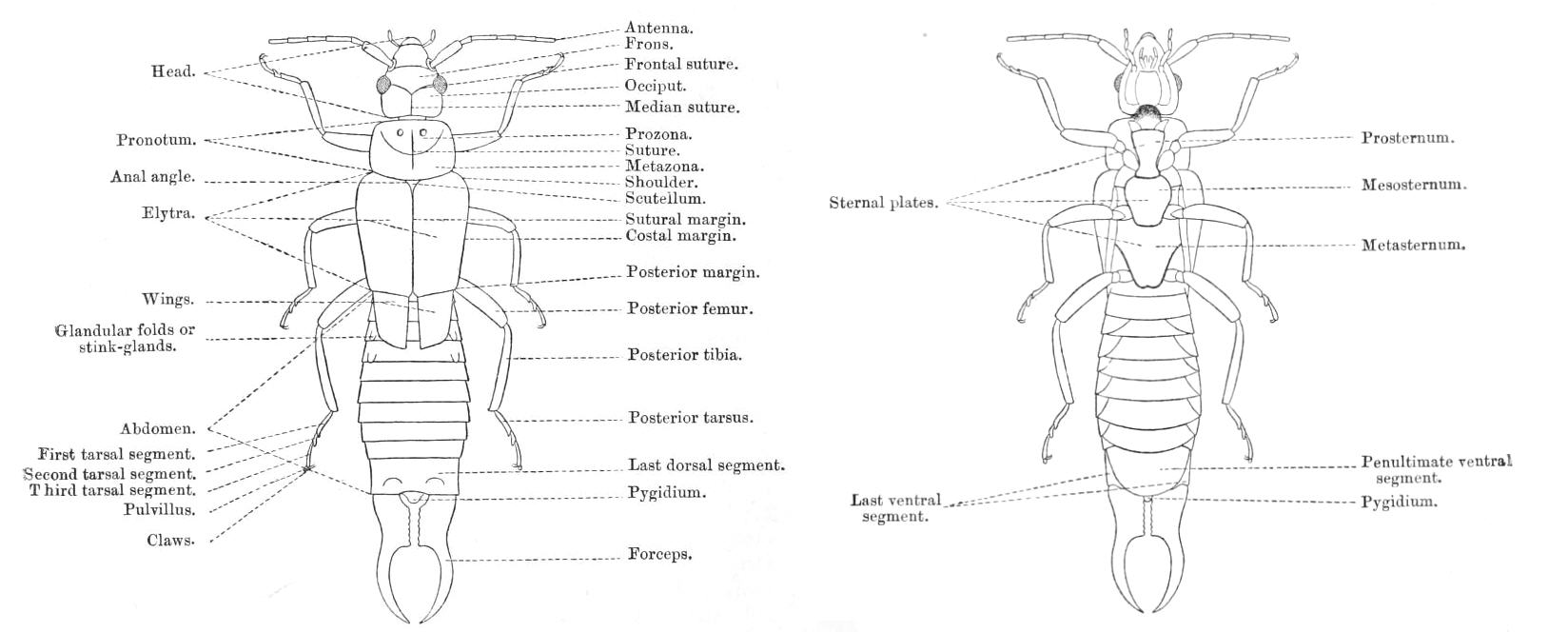In addition to slugs, frogs, snails, and crickets, our yard is also home to the species
Forficula auricularia, commonly known as the "earwig." One theory about the name's etymology is that it's derived from the Old English
ēare, meaning "ear", and
wicga, meaning "insect." The Anglo-Saxons called it so because they believed that it would enter the ear of a sleeping person, burrow into the brain, and lay its eggs there, causing the person to go insane. However, this has been dismissed as an old wives' tale. See
http://www.ncbi.nlm.nih.gov/pmc/articles/PMC1306897/?page=1 for more info. Another theory is that "earwig" used to be "ear-wing", referring to the ear-shape of the hind wing.
 |
| Those forceps do look intimidating, don't they? Yet earwigs are harmless. Unless you have an infestation of them, you'll never find one in your bed. |
 |
| The curved shape of the forceps indicates that this earwig is a male. |
Here is a morphological diagram:
Here are two photos of a female in her nest:
 |
| With eggs. Nabokov at en.wikipedia.org. Photo by Tom Oates, 2010. |
 |
| With newly hatched young. Nabokov at en.wikipedia.org. Photo by Tom Oates, 2010. |
And here is a good site that provides an overview of their characteristics, life cycle, and habits:
http://www.ento.csiro.au/education/insects/dermaptera.html.






No comments:
Post a Comment